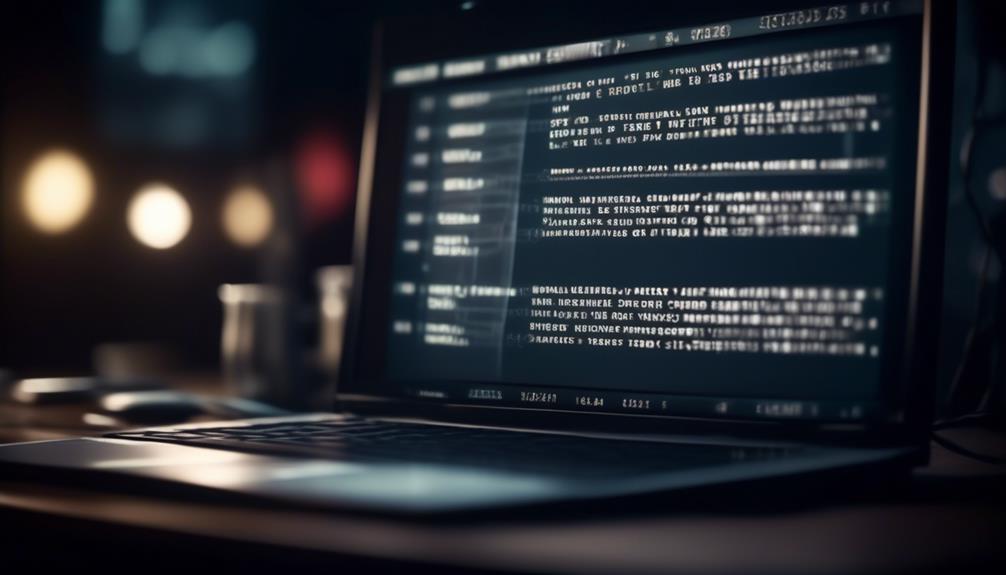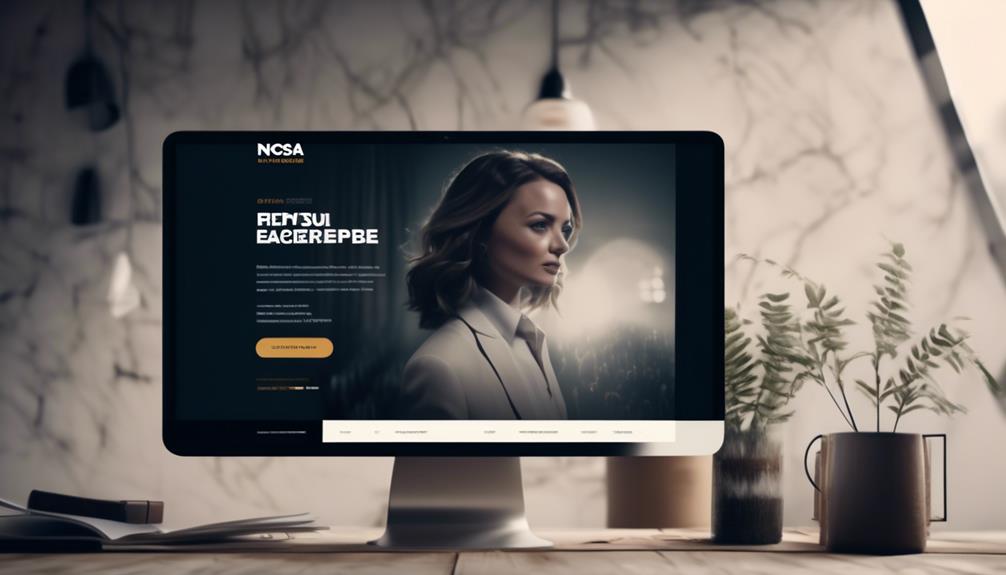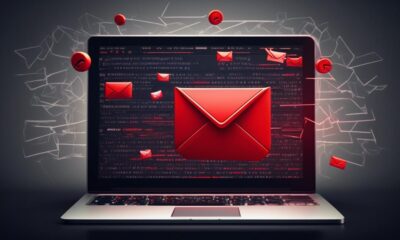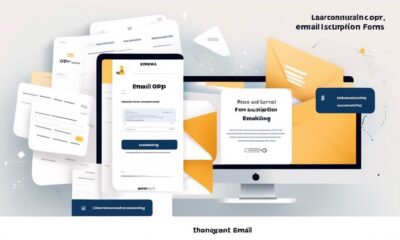Email Automation
How to Write an Email Asking for Technical Support
Uncover the key elements to masterfully craft an email seeking technical support, guaranteeing a seamless resolution to your tech woes.

As we journey through the complex landscape of technology, we frequently encounter the need for help to solve problems that emerge without warning.
Picture this: you're in the middle of a project, and suddenly, a technical glitch disrupts your workflow. How do you effectively reach out for the support you require to swiftly resolve the matter at hand?
Let's explore the art of composing an email requesting technical assistance, where clarity and precision reign supreme, ensuring a prompt and satisfactory solution.
Key Takeaways
- Craft a specific subject line with keywords related to the problem.
- Set a respectful and concise tone, avoiding blame and expressing empathy.
- Provide clear and concise details, including error messages and troubleshooting steps.
- Ask for specific assistance, outlining the technical problem and needed support.
Crafting an Effective Subject Line
Crafting an effective subject line is crucial when seeking technical support via email for prompt assistance. The subject line is the first thing tech support will see, so it needs to be clear and informative.
When writing a tech support email, it's essential to make the subject line specific to the issue you need help with. Generic subject lines like 'Help Needed' or 'Technical Support Request' may get overlooked or lost in a crowded inbox. Instead, provide a brief summary of your problem in the subject line to help the support team quickly understand the nature of your request.
To ensure your email stands out and receives a timely response, use keywords related to the problem you're experiencing. Including details like the device or software involved can also help the support team prioritize and assign your request effectively.
Setting the Tone Appropriately

To establish a positive and effective communication channel with technical support via email, it's essential to convey a respectful and concise tone in your initial message. When writing your email, let the tone of voice be polite and professional to express empathy towards the support team.
Here are some key points to consider:
- Be Clear and Specific: Clearly explain the issue you're facing and provide any relevant details such as error messages or recent changes.
- Avoid Blaming: Instead of pointing fingers, focus on describing the problem and how it's affecting your work.
- Ask for Help Directly: Clearly state that you require assistance and specify what kind of support you're looking for.
Providing Clear and Concise Details
When detailing technical issues in your email to customer support, ensure you provide clear and concise information regarding the problem encountered. Effective communication is key when asking for help from a technical support team.
In your email, clearly state the issue you're facing, such as error messages or codes, and be specific about the device or software involved. Include any relevant details that could assist the support team in understanding the context of the problem.
It's also beneficial to explain any troubleshooting steps you have already taken to try and resolve the issue. By outlining the problem clearly and providing all necessary details, you make it easier for the support team to assist you promptly and effectively.
Asking for Specific Assistance

When encountering a technical issue, clearly outlining the problem and specifying the assistance needed is essential for efficient support. When writing a customer support email, it's crucial to be specific about the help you require.
Here are some tips to write a request email for Perfect Tech Support:
- Describe the Issue: Provide a detailed explanation of the technical problem you're facing. Be as specific as possible to help the tech support team understand the issue accurately.
- Mention Error Messages: Include any error messages or codes that have appeared on your screen.
- Outline Previous Steps: Briefly mention any troubleshooting steps you have already attempted.
- Specify Software/Hardware: Clearly state the software or hardware components involved in the issue.
Closing Professionally and Polietly
Let's conclude the email with a touch of professionalism and courtesy by incorporating a polite closing phrase and providing our contact information for further communication.
When writing an email asking for technical support, it's crucial to end on a positive note to ensure a good customer experience. Remember to express gratitude with phrases like 'Thank you for your assistance' or 'I appreciate your help.'
Additionally, make it easy for the recipient to reach out to you by including your contact information, such as your email address and phone number.
End the email with a professional closing, such as 'Best regards' or 'Sincerely,' to leave a lasting impression.
Writing a perfect support email involves not only asking for help but also closing it professionally to build strong relationships with the support team. Proofread your email for any errors to avoid misunderstandings, especially with potentially frustrated or angry customers.
Frequently Asked Questions
How Do You Write an Email to Technical Support?
We write emails to technical support by following a structured approach.
It's crucial to use a clear subject line, polite greeting, and concise explanation of the issue.
Including relevant details like error messages helps support agents understand the problem better.
We always wrap up with a polite closing and our contact information for further assistance.
This format ensures effective communication and helps support teams address our concerns promptly.
How Do You Write an Email Asking for Support?
We've got you covered!
When seeking support, it's vital to be clear and concise in your request. Start with a friendly greeting, state your needs clearly, and provide all necessary details.
End with contact info and a thank you. Remember, a little kindness goes a long way in these situations. Trust us, following these steps will make your support request a breeze!
How Do You Write a Professional Email Asking for Something?
When we write a professional email asking for something, it's crucial to be clear and concise.
Start with a polite greeting and clearly state your request. Providing necessary details and ending with a polite closing helps ensure effective communication.
Remember to include your contact information for further dialogue. Keeping the tone friendly yet professional is key to making a good impression.
How Do You Write an Email Explaining a Technical Problem?
When writing an email explaining a technical problem, we ensure clarity by succinctly stating the issue and providing relevant details.
Organizing information with bullet points or numbered lists helps the recipient follow along easily.
We avoid technical jargon and opt for simple language.
Expressing appreciation for the recipient's assistance is crucial.
Starting with an image to set the tone adds sophistication to our message while maintaining a precise, clear, and friendly style.
Can the same format be used for writing an email to ask for technical support as for writing an email to the manager regarding updates?
Yes, the same format can be used for writing an email to ask for technical support as for writing an email to the manager regarding updates. It’s important to be formal and clear in both cases. Here’s a sample email manager update that can work for either situation.
Conclusion
We hope this guide on how to write an email asking for technical support has been helpful.
Remember, being clear and concise is key to getting the assistance you need. Don't hesitate to reach out for help when you need it, as support teams are there to assist you.
By following these tips, you can streamline the process and get the help you need quickly and efficiently.
Thank you for taking the time to read this guide.
Erik – Email, SEO, AI Expert Writer Erik is the strategist, the thinker, and the visionary. His role at Influenctor is pivotal in integrating SEO with AI-driven content strategies. With an extensive background in email marketing and a profound understanding of search engine algorithms, Erik develops innovative strategies that elevate our client’s online presence. His work ensures that our content is seen, felt, and remembered.
Email Template
Crafting an Effective Internship Application Email Template
Need an edge in securing that dream internship? Discover the secrets to crafting a compelling internship application email that will set you apart.

At the edge of countless possibilities, perfecting the art of crafting a compelling email for an internship application is like opening a door to limitless opportunities. This is a skill that requires both precision and finesse, and it is essential for improving your chances of securing your desired internship.
With so much at stake, it's crucial to understand the nuances of effectively communicating your intentions and qualifications. But where do we begin? How do we ensure that our email stands out from the rest, commanding attention and respect?
Join us as we explore the intricacies of the Internship Application Email Template, dissecting its components and uncovering the secrets to capturing the interest of potential employers.
Key Takeaways
- Research and address the recipient correctly to show professionalism and respect.
- Customize each email to highlight relevant skills and demonstrate suitability for the internship.
- Use a persuasive closing to express genuine interest, summarize qualifications, and request an interview or follow-up.
- Avoid common mistakes such as not tailoring the email, proofreading errors, and failing to express genuine interest in the company and internship opportunities.
Crafting a Professional Greeting
Crafting a professional greeting sets the tone for your internship application email, allowing you to make a positive first impression on the recipient. When reaching out to a company or specific individual, it's crucial to address them properly. Conducting research to determine the correct name and title demonstrates a genuine interest in the company.
If the recipient's identity is unknown, using 'Dear Hiring Manager' or 'Dear [Department] Team' can be appropriate. However, whenever possible, addressing a specific individual by name is preferred. For instance, if you're interested in a particular department, addressing the head of that department can add a personalized touch to your email. This attention to detail shows that you have taken the time to tailor your communication to the company, reflecting your professionalism and respect for the recipient.
When sending an internship application email, remember that a well-crafted greeting sets the stage for the valuable experience you have to offer and can significantly impact the opportunities a company may consider offering you.
The Art of Being Specific

When applying for an internship, it is essential to clearly articulate my specific career goals and how they align with the company's objectives. The art of being specific in an internship application email template is crucial for grabbing the attention of potential employers. This involves tailoring the email to the recipient's professional background and the company's culture. Providing specific examples of how my skills and experiences match the internship requirements is a key strategy. In addition, using a direct and concise subject line that reflects the purpose of the email is essential. It is also important to include specific details about the internship role or company that interest me. Here's how the art of being specific can be applied to an internship application email template:
| Specific Internship Goals | Aligning with Company Objectives |
|---|---|
| Clearly state career objectives related to the internship. | Explain how these goals contribute to the company's mission and vision. |
| Customize each email to highlight skills relevant to the specific internship. | Showcase how these skills can benefit the company and the internship role. |
| Provide specific examples of experiences that demonstrate suitability for the internship. | Relate these experiences to the company's values and the requirements of the internship. |
Mastering the art of being specific in an internship application email template can significantly increase the chances of securing an internship opportunity.
The Power of a Persuasive Closing
In our internship application email, we aim to leave a strong, persuasive impression that reinforces our qualifications and enthusiasm for the opportunity.
A persuasive closing holds significant weight in our email outreach, especially when vying for competitive internship opportunities. It serves as the final opportunity to engage our potential employer and leave a lasting impact.
By maintaining a professional tone and expressing genuine interest, we can effectively convey our enthusiasm for the position. It's crucial to express gratitude for the recipient's time and consideration, while summarizing our qualifications and aligning them with the internship.
Clearly stating our eagerness for an interview or a follow-up email also provides a clear call to action. This approach ensures that our email stands out in the realm of cold emailing, leaving the recipient with a positive impression.
The power of a persuasive closing can't be overstated, as it holds the potential to influence internship acceptance emails and ultimately secure valuable opportunities.
Avoiding Common Mistakes

As we strive to leave a strong and persuasive impression in our internship application email, it's crucial to be mindful of common mistakes that can hinder our chances of making a positive impact. When crafting an email for an internship, it's essential to avoid generic content by tailoring each email for the specific company. Expressing genuine interest in the internship opportunities and the company itself can significantly increase the chances of a favorable response. Additionally, double-checking attachments is vital to ensure that your CV and other necessary documents are included, preventing missed opportunities due to oversight.
Another common mistake to avoid is overlooking the importance of proofreading. Meticulously proofreading your email can help catch any typos or grammatical errors that could detract from the professionalism of your application. Furthermore, keeping the email concise and straight to the point is crucial. This reflects respect for the recipient's time and attention, increasing the likelihood of your email being read and considered.
Moreover, addressing the correct company and internship role in your email is essential to avoid any misunderstandings. Demonstrating attention to detail in this aspect showcases your genuine interest and dedication. By being mindful of these common mistakes, we can enhance the effectiveness of our internship application email and increase our chances of securing the desired internship offer.
Showcasing Your Skills
Showcasing our relevant skills and experiences in the internship application email is crucial for effectively demonstrating our qualifications and suitability for the position. When crafting emails for internship applications, it's essential to highlight specific details that align with the internship role and the company's needs.
To effectively showcase our skills, we should focus on the following key areas:
- Academic Knowledge: Emphasize relevant coursework, projects, or research that demonstrate our academic achievements and how they relate to the internship position. This could include relevant skills such as data analysis, programming languages, or research methodologies.
- Industry Experience: Highlight any previous internships, part-time jobs, or volunteer experiences that are relevant to the industry. This could include specific projects or responsibilities that provided valuable insights and skills applicable to the internship role.
- Genuine Interest: Communicate our genuine interest in the company and the specific internship opportunity. This could include referencing recent company developments, projects, or initiatives that resonate with our career aspirations and professional interests.
Frequently Asked Questions
How Do You Write an Email When Applying for an Internship?
When applying for an internship, we research potential contacts and companies, craft personalized emails, and maintain a professional tone.
We highlight relevant experiences and connections while structuring the email with a clear subject line, greeting, introduction, body, and sign-off.
This approach demonstrates our professionalism and genuine interest in the internship, increasing our chances of making a positive impression on the recipient.
What Is the Best Email Template for Accepting an Internship?
Accepting an internship offer can be a pivotal moment in our career journey. It's essential to convey gratitude and enthusiasm in our email reply.
We should express our appreciation for the opportunity and confirm our acceptance in a professional and courteous manner. It's also important to inquire about any next steps or additional details regarding the internship.
Our email should reflect our professionalism and eagerness to contribute to the organization.
What to Write on Subject When Sending an Email for Internship?
When sending an email for an internship, it's crucial to craft a subject line that captures attention and conveys professionalism.
We've found that subject lines with the recipient's name can increase open rates by 22%. It's essential to personalize the subject line and make it relevant to the internship.
This approach demonstrates our attention to detail and respect for the recipient, setting a positive tone for the rest of the email.
How to Write an Email Asking for a Full Time Job After Internship?
We'll express our intention for a full-time job in the email, highlighting our contributions and achievements during the internship.
We'll demonstrate enthusiasm for the company and how it aligns with our career goals.
Then, we'll request a meeting to discuss the possibility of a full-time position and express gratitude for the internship experience.
This demonstrates our eagerness to contribute further.
Can I Use the Internship Application Email Template to Address Mental Health Concerns in the Workplace?
Yes, you can use the email template for mental health to address any concerns regarding mental health in the workplace. Being open and communicative about mental health issues is important, and using a template can help ensure the message is conveyed effectively and sensitively.
Conclusion
In conclusion, crafting a compelling internship application email is essential for making a strong impression on potential employers. By personalizing your greeting, being specific about your skills and qualifications, and ending with a persuasive closing, you can stand out from the crowd.
Avoiding common mistakes and showcasing your skills will further enhance your chances of securing the internship of your dreams. With these tips, you can confidently write an effective email that highlights your professionalism and enthusiasm.
So why wait? Start crafting your winning email today!
Natali – Editor in Chief (Strategy and Mastery, AI Expert) Natali, our Editor in Chief, is the driving force behind our content’s strategic direction. With a keen eye for detail and a deep understanding of market trends, Natali ensures that our content is top-notch and strategically aligned with our client’s goals. Her expertise in AI helps to seamlessly integrate advanced technology into our marketing strategies, pushing the boundaries of conventional marketing.
Email Template
Crafting an Effective Mentor Email Template
Open the door to mentorship success with our expert-approved email template – your key to unlocking valuable guidance and support.

We’ve all been there – staring at a blank screen, trying to compose the perfect email to a mentor. It can feel like quite the daunting task, can’t it?
The right words can make all the difference in catching a potential mentor’s attention and securing their guidance. But fear not, as we have some valuable insights and proven strategies to help you craft a compelling mentor email that will set you on the path to a fruitful mentorship.
So, are you ready to take your outreach to the next level and make a lasting impression on your prospective mentor?
Key Takeaways
- Personalization is key in mentor emails, showing a clear understanding of the potential mentor’s work and expertise.
- The tone of the first meeting is important, expressing a desire for mentorship and showcasing the value you bring as a mentee.
- Effective email templates for seeking mentorship emphasize genuine admiration for the mentor’s work, articulating career goals, and requesting a specific time for a discussion or meeting.
- When approaching potential mentors, thorough research, clear and concise requests, and highlighting the value you can offer are essential, while avoiding common mistakes such as a lack of research and self-centeredness.
Crafting the Perfect Mentor Email
Crafting the perfect mentor email requires personalized and thoughtful consideration of the potential mentor’s background and expertise. When reaching out to a potential mentor, it’s crucial to demonstrate a clear understanding of their work and how it aligns with your career goals. Utilizing a mentor email template can provide a structured approach, but personalizing the message to reflect genuine interest in the mentor’s work is essential. Researching the potential mentor beforehand allows for a tailored approach, highlighting specific connections between their expertise and your career aspirations.
In the mentorship program, the first meeting sets the tone for the relationship, making it crucial to craft an email that not only expresses your desire for mentorship but also showcases the value you bring to the table. Successful mentoring relationships are built on mutual respect and a willingness to learn. Therefore, when choosing someone to approach, it’s important to gauge your interest in their work and ensure that it aligns with your goals.
Effective Email Templates for Seeking Mentorship

Seeking mentorship through email can be a strategic and impactful way to connect with experienced professionals who can provide valuable guidance and support in your career journey. When crafting an email to seek mentorship, consider the following effective email templates:
- Express genuine admiration for the potential mentor’s work and achievements, showing that you’ve done your research and truly value their expertise.
- Clearly articulate your career goals and the specific areas in which you’re seeking guidance, demonstrating your commitment to personal and professional growth.
- Share your own experiences and challenges, allowing the potential mentor to understand your journey and the support you require.
- Emphasize how your core values align with those of the potential mentor, highlighting the potential for a mutually beneficial relationship.
- Request a specific time for a brief discussion or meeting to further explore the potential mentorship, showing that you respect their time and are serious about the opportunity.
Crafting an effective mentorship email can significantly increase your chances of capturing the attention of a potential mentor and initiating a meaningful connection that could positively impact your career path.
Tips for Approaching Potential Mentors
As we consider how to approach potential mentors, it’s essential to pivot from the effective email templates for seeking mentorship and focus on practical tips that can help us initiate meaningful connections with experienced professionals. When reaching out to potential mentors, it’s important to conduct thorough research to understand their background and expertise. This will demonstrate genuine interest and help tailor your approach effectively. Expressing a clear and concise request for a meeting is crucial; potential mentors are often busy individuals, so respecting their time is key. Highlight the value you can offer as a mentee, showcasing what sets you apart and how the mentorship can be mutually beneficial. Additionally, sharing your story and goals can help build a productive mentoring relationship. Here are some tips to consider when approaching potential mentors:
| Tips for Approaching Potential Mentors |
|---|
| Research potential mentors thoroughly |
| Clearly and concisely request a meeting |
| Highlight the value you can offer |
| Share your story and goals |
Approaching potential mentors with these tips in mind will help in initiating meaningful connections and creating a strong foundation for a successful mentoring relationship.
Common Mistakes to Avoid in Mentorship Requests

When approaching potential mentors, it’s important to avoid common mistakes that can hinder the effectiveness of mentorship requests. Here are some common mistakes to avoid:
- Not researching your potential mentor: It’s crucial to understand the background and expertise of the person you’re reaching out to.
- Focusing on self-centered gains: Mentorship is about mutual benefits and respect, so make sure your request reflects that.
- Sending a poorly structured email: A clear and concise email will effectively convey your message.
- Forgetting to express gratitude: Acknowledge the value the mentor can bring and how you can contribute as a mentee.
- Choosing the wrong communication method: Ensure that you reach out via email unless the mentor has explicitly stated a preference for a phone call.
Avoiding these mistakes will show potential mentors that you’re willing to go above and beyond to make the most out of the mentorship relationship.
Professional Email Samples for Seeking Mentorship
Crafting a compelling and well-structured email when seeking mentorship can significantly impact the success of your request and potential mentorship relationship. Professional email samples for seeking mentorship provide valuable guidance on how to approach potential mentors effectively. These templates offer structured and effective ways to express value as a mentee, align with a potential mentor’s core values, and request a meeting to discuss mentorship.
Whether you’re reaching out to someone you already know, seeking mentorship through a referral, or connecting on professional platforms like LinkedIn, these email structures and samples demonstrate thoughtfulness, research, and a clear request for mentorship. It’s crucial to express gratitude, show humility, and highlight the mutual benefits in the mentor-mentee relationship.
When using these professional email samples, it’s essential to convey your passion for learning, commitment to career development, and the opportunity to hop on a call to discuss how the potential mentor’s guidance can help you set and achieve your professional goals. These templates are designed to help you establish a mentoring relationship with individuals who are passionate about helping others succeed.
Frequently Asked Questions
How Do You Write a Mentor Email?
When writing a mentor email, it’s important to express admiration and respect. We can start by introducing ourselves and acknowledging their work. In the email, we can mention any previous conversations we have had with them and express appreciation for their expertise. Complimenting their work, if applicable, can also be a good idea. By expressing enjoyment of past conversations and admiration for their expertise, we can demonstrate sincerity and set the tone for a potentially valuable mentorship. Ultimately, the key is to convey genuine interest and respect in our communication with potential mentors.
How Do You Email a Potential Mentor Subject Line?
When reaching out to a potential mentor, we aim to craft a subject line that stands out in a crowded inbox. Using the mentor’s name or a mutual connection can increase the likelihood of your email being noticed.
In fact, subject lines that include a recipient’s name have been found to increase open rates by 20%.
It’s essential to convey enthusiasm and respect while keeping the subject line clear and concise.
How Do You Write a Message to a Mentor?
When writing a message to a mentor, we should start by expressing our admiration for their work and explaining why we’re reaching out.
We should be clear about what we hope to gain from the mentorship and how we believe the mentor’s expertise can help us.
It’s important to be respectful of the mentor’s time and to express gratitude for any assistance they can provide.
How Do You Write a Formal Letter to a Mentor?
When writing a formal letter to a mentor, it’s crucial to maintain a respectful and professional tone. Start with a polite salutation, use appropriate titles, and address the mentor with utmost respect.
Clearly state the purpose of the letter and provide relevant details. Be concise, yet thorough.
End with a gracious closing and your contact information.
Can the Mentor Email Template be Adapted for Reaching Out to Potential Candidates on Linkedin?
Yes, the mentor email template can easily be adapted for reaching out to potential candidates on LinkedIn. By tweaking the language and personalizing the message, the LinkedIn recruiter email template can be a powerful tool for engaging with qualified professionals on the platform.
Conclusion
In conclusion, reaching out to potential mentors can be a daunting task, but with the right approach and a well-crafted email, it can lead to invaluable guidance and support.
Remember, ‘don’t put all your eggs in one basket’ – it’s important to reach out to multiple potential mentors to increase your chances of finding the right match.
Good luck with your mentorship journey!
Natali – Editor in Chief (Strategy and Mastery, AI Expert) Natali, our Editor in Chief, is the driving force behind our content’s strategic direction. With a keen eye for detail and a deep understanding of market trends, Natali ensures that our content is top-notch and strategically aligned with our client’s goals. Her expertise in AI helps to seamlessly integrate advanced technology into our marketing strategies, pushing the boundaries of conventional marketing.
Email Template
Creating Professional NCSA Email Templates
Uncover the secrets of NCSA's Email Template and learn how it can transform your college recruitment efforts.

The saying “You never have a second chance to make a first impression” is particularly important when reaching out to college coaches. That’s why we strongly suggest checking out NCSA’s Email Template.
With its comprehensive guidance on crafting effective emails, this tool could be the key to standing out in a crowded inbox.
But there’s more to it than just the initial contact – the template also offers strategies for building lasting relationships with coaches.
Interested in finding out how to make a lasting impression and maximize your chances of getting noticed? Keep reading to discover the ins and outs of NCSA’s Email Template and how it could impact your athletic recruitment journey.
Key Takeaways
- Crafting an attention-grabbing subject line with specific details and standout information will increase the chances of your recruiting email getting noticed by coaches.
- Personalizing your email content by incorporating details about the coach’s team, recent achievements, and coaching philosophy shows that you’ve done your research and genuinely want to be part of their program.
- Utilizing the customization features of the template, such as tailoring the content, crafting a compelling subject line, and highlighting athletic and academic achievements, will align with the coach’s preferences and increase engagement.
- Maximizing engagement with follow-up strategies, such as personalized greetings, referencing previous interactions, utilizing the Message Center, including multimedia elements, and concluding with clear call-to-action, will help prompt specific next steps and feedback.
Crafting a Compelling Subject Line
Crafting a compelling subject line for your NCSA email can significantly impact your chances of grabbing a coach’s attention and standing out among the numerous emails they receive. When crafting subject lines for recruiting emails, it’s crucial to include specific details such as your name, graduation year, sport position or event, and location. This helps coaches quickly identify who you are and what you bring to the table. Adding standout details like your 40-yard dash time, GPA, or ACT score can further pique their interest. For example, a subject line could look like “John Smith | Class of 2023 | Wide Receiver | Chicago, IL | 40-Yard Dash: 4.5s | GPA: 3.8”. This subject line is concise yet packed with essential information that immediately showcases your athletic and academic prowess. It’s important to make every word count in the subject line to ensure it captures the coach’s attention and compels them to open your email. By following these guidelines, you can maximize the impact of your subject line and increase the likelihood of your recruiting email getting noticed amidst the coach’s busy inbox.
Personalizing Your Email Content

After capturing the coach’s attention with an attention-grabbing subject line that showcases your athletic and academic strengths, the next step is personalizing your email content to make a genuine connection and express your interest in their program. When personalizing your email, it’s crucial to go beyond simply addressing the coach by name. Incorporate specific details about their team, recent achievements, or coaching philosophy to show that you’ve done your homework and genuinely want to be part of their program.
Personalization Tips Examples Address the coach by name “Dear Coach Smith” Reference specific team accomplishments “I was impressed by your team’s recent championship” Highlight mutual connections “I noticed that we have a mutual connection in Coach Johnson” Express genuine interest in the program “I am excited about the opportunity to contribute to your program”
Using custom email templates can help maintain a personal touch while also ensuring consistency in your communication. It’s important to convey your passion for the sport and the program in a genuine and sincere manner. By making a personal connection and showing your dedication to the team, you can significantly increase the impact of your outreach efforts.
Utilizing the Template’s Customization Features
Utilizing the template’s customization features enhances the effectiveness of your email outreach by tailoring the content to align with the coach’s preferences and demonstrate your genuine interest in their program. Here are four ways to maximize the customization features:
- Craft a compelling subject line that grabs the coach’s attention and entices them to open your email.
- Personalize your introduction by addressing the coach by name and expressing genuine interest in their program.
- Utilize the customization features to highlight specific athletic and academic achievements that resonate with the coach’s preferences, showcasing your potential fit for their team.
- Leverage the action item feature to clearly outline your next steps and expectations, making it easy for the coach to understand your intentions and respond accordingly.
Maximizing Engagement With Follow-Up Strategies

When optimizing follow-up strategies, incorporating personalized greetings and referencing previous interactions builds a strong connection with the coach. By addressing the coach by name and mentioning specific details from past conversations, athletes can demonstrate genuine interest and engagement. This personalized approach showcases a commitment to the relationship and enhances the likelihood of a positive response.
Additionally, utilizing the Message Center to send an email allows for efficient communication and easy reference to previous correspondences. Furthermore, including multimedia elements, such as videos showcasing progress and improvement since the initial contact, can provide a compelling visual representation of the athlete’s development.
To maximize engagement, it’s crucial to conclude follow-up emails with a clear call-to-action, prompting the coach to take specific next steps or provide feedback on the athlete’s progress. Consistently following up at appropriate intervals demonstrates dedication and commitment to the recruitment process, reinforcing the athlete’s proactive and professional approach.
Tracking and Analyzing Email Performance
Tracking and analyzing email performance allows us to gain valuable insights into the effectiveness of our outreach efforts. By understanding the best time to send emails for optimal performance tracking, we can maximize the impact of our communications.
Using personalized tracking links, we can monitor recipient engagement with our emails, gaining valuable data on individual interactions. Analyzing open rates and click-through rates provides us with quantifiable metrics to gauge the effectiveness of our email campaigns. This allows us to identify trends and patterns in recipient behavior, informing our future email strategies.
By utilizing email performance metrics, we can refine and improve the content and strategies of our future emails, ensuring that our communications are continuously optimized for success. Implementing email tracking tools enables us to measure the success of our outreach efforts, providing us with concrete data to inform our decision-making process.
This comprehensive approach to tracking and analyzing email performance empowers us to make informed decisions and optimize our outreach efforts for maximum impact.
Frequently Asked Questions
Is NCSA Recruiting Legit?
Yes, NCSA recruiting is legit. It provides a centralized platform for athletes to connect with college coaches, offering efficient communication tools and the ability to contact coaches nationwide.
Athletes can easily manage and track recruiting correspondence using NCSA’s Message Center, which includes features for attaching documents and videos to showcase athletic abilities.
The platform streamlines the recruiting process, making it a legitimate and valuable resource for athletes pursuing college opportunities.
How Do You Write a Coaching Email?
When writing a coaching email, we focus on showcasing our athletic and academic achievements, expressing genuine interest in the program, and requesting an opportunity to connect.
We highlight our standout stats and include a specific action item, such as requesting a time for a phone call or an in-person meeting.
The subject line should include our name, graduation year, sport position, location, and a standout detail to grab the coach’s attention.
How Do You Announce a Commitment on Ncsa?
We announce a commitment on NCSA by logging into our account and navigating to the ‘My Commitments’ section. Here, we can input the details of our commitment, including the sport, college or university, and any additional information.
This information is then shared with our network of coaches and connections to inform them of our decision. This process ensures that our commitment is properly communicated and acknowledged within the NCSA platform.
How Do You Get Noticed on Ncsa?
To get noticed on NCSA, we need a standout subject line and a personalized introduction. Highlighting our athletic and academic achievements will make us stand out.
We should also provide a clear call to action for the coach to respond or take the next step. Utilizing NCSA’s Message Center will help us efficiently communicate with coaches.
Standing out and being proactive are key to getting noticed on NCSA.
Can the NCSA Email Template be Adapted for Mentoring Purposes?
Yes, the NCSA email template for mentors can be easily adapted for mentoring purposes. By customizing the content to reflect mentoring goals and objectives, the template can effectively facilitate communication between mentors and mentees, streamlining the mentoring process and ensuring clarity and consistency in messaging.
Conclusion
In conclusion, utilizing NCSA’s Email Template and Message Center can greatly enhance your communication with college coaches and improve your athletic recruitment prospects.
Remember, ‘Rome wasn’t built in a day,’ so be patient and persistent in your efforts to connect with coaches and showcase your talents.
By following the template’s guidelines and utilizing its customization features, you can effectively track and analyze your email performance to maximize engagement and ultimately achieve your recruitment goals.
Natali – Editor in Chief (Strategy and Mastery, AI Expert) Natali, our Editor in Chief, is the driving force behind our content’s strategic direction. With a keen eye for detail and a deep understanding of market trends, Natali ensures that our content is top-notch and strategically aligned with our client’s goals. Her expertise in AI helps to seamlessly integrate advanced technology into our marketing strategies, pushing the boundaries of conventional marketing.
-

 Email Marketing Tools and Techniques1 month ago
Email Marketing Tools and Techniques1 month agoHow to Export Mailchimp Contacts
-

 How to Write Email2 months ago
How to Write Email2 months agoHow to Write Negative Feedback Email: Sample Guide
-

 Email Automation3 months ago
Email Automation3 months agoAutomated Email Marketing 101: A Beginner's Tutorial
-

 Marketing Strategy3 weeks ago
Marketing Strategy3 weeks agoHow to Make an Offer So Good That Customers Can’t Resist!
-

 Email Warmup3 weeks ago
Email Warmup3 weeks agoWarm Follow-Up Email
-

 GDPR Email Marketing4 weeks ago
GDPR Email Marketing4 weeks agoGDPR Email Marketing: Consent Examples Guide
-

 Email Design Hub1 month ago
Email Design Hub1 month ago3 Essential Tools for Email Marketing Design Success
-

 Email Marketing1 day ago
Email Marketing1 day agoWhat Is Email Marketing Advantages and Disadvantages



















